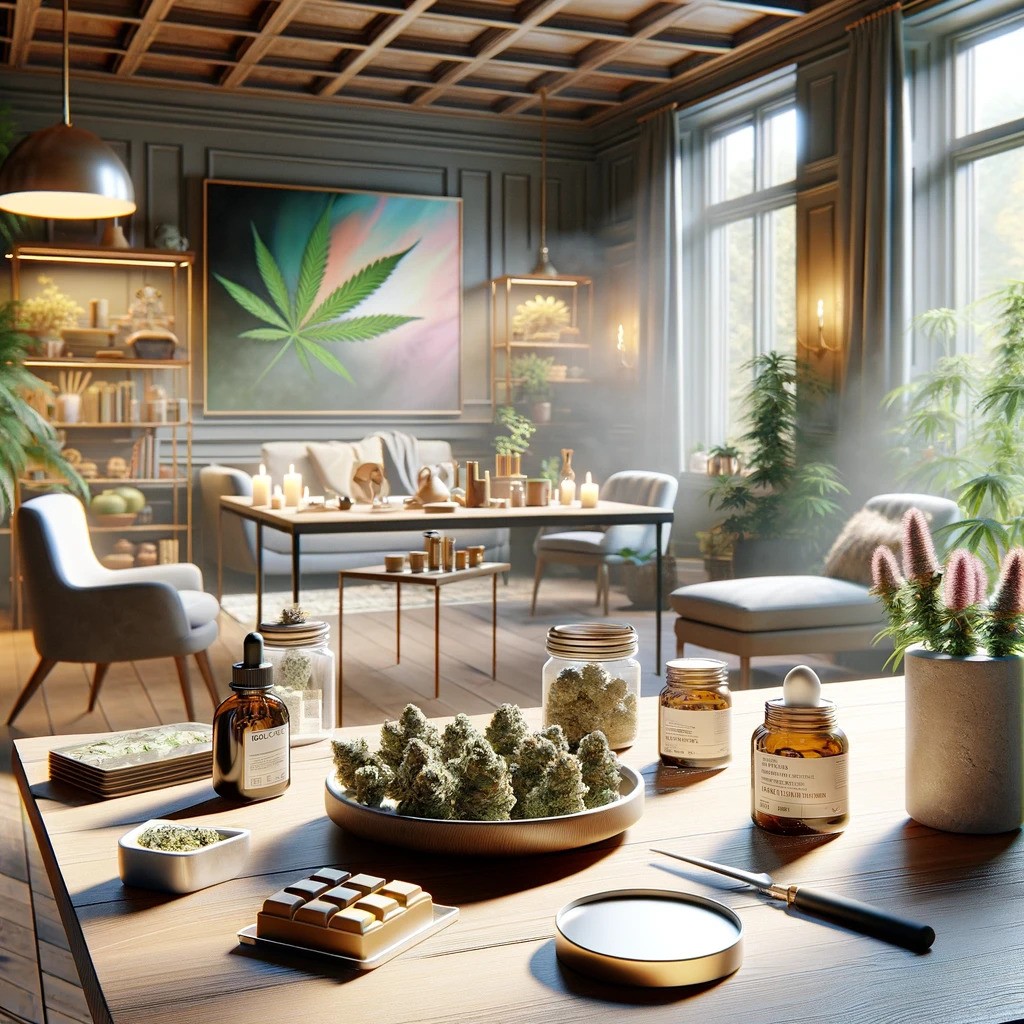
The cannabis industry has undergone a significant transformation, evolving from covert operations to a sophisticated market characterized by innovative products and immersive experiences.
This metamorphosis is not just about legality and accessibility; it’s about a cultural shift that embraces creativity, wellness, and community. As we delve into cannabis culture, it’s essential to understand how design and creativity play pivotal roles in shaping consumer experiences and perceptions.

The Art of Packaging
In the world of cannabis, first impressions matter. The packaging is not merely a container but a communication tool that conveys brand identity, quality, and the product’s unique story.
- Aesthetic Appeal: The visual design of cannabis packaging has moved beyond the stereotypical motifs to embrace minimalist designs, vibrant illustrations, and elegant typography. This shift reflects a broader audience’s preferences, appealing to connoisseurs and newcomers. The packaging’s aesthetic appeal can significantly influence purchasing decisions, making it a critical aspect of product design.
- Sustainability and Innovation: As consumers become more environmentally conscious, sustainable packaging solutions have become increasingly important. Brands are exploring biodegradable materials, reusable containers, and minimalist designs to reduce their ecological footprint. Innovations such as child-proof mechanisms and tamper-evident seals also enhance safety and integrity, further elevating the consumer’s trust in the product.
Experience by Design

Cannabis experiences extend beyond the product, encompassing how consumers interact with the brand at various touchpoints. Creating engaging, informative, and comfortable environments can transform the cannabis purchase and consumption experience.
- Retail Spaces: The design of cannabis dispensaries is crucial in demystifying cannabis and fostering a welcoming atmosphere. Modern dispensaries are adopting designs that mirror high-end retail stores, with open layouts, interactive displays, and private consultation areas. These spaces aim to educate consumers, showcase products, and create a sense of community among enthusiasts.
- Digital Presence: In an age where digital interaction is paramount, a cannabis brand’s online presence must be as compelling as its physical counterpart. An intuitive website, engaging social media content, and educational resources can build a brand’s authority and connect with a broader audience. Virtual reality (VR) tours of cultivation facilities and augmented reality (AR) product demonstrations show how technology can enhance the digital experience.
Innovations in Product Design
The diversity of cannabis products today is a testament to the industry’s creativity and responsiveness to consumer needs.
Consumers often wonder which is stronger, delta 8 or delta 10, as they navigate through options like traditional flowers, edibles, topicals, and concentrates. The array has expanded to cater to different preferences and use cases, addressing questions such as which is stronger, delta 8 or delta 10, to ensure consumers are informed about the potency and effects of these cannabinoids.
- Form Factor and Functionality: From traditional flowers to edibles, topicals, and concentrates, the array of cannabis products has expanded to cater to different preferences and use cases. The design of these products, including their form factor, dosage precision, and ease of use, is critical for consumer satisfaction. For example, discreet vape pens, precisely dosed edibles, and topicals with targeted applications offer consumers a variety of ways to integrate cannabis into their lifestyle.
- The Role of Technology: Technological advancements have significantly influenced product design, with innovations like controlled-dose vaporizers and solventless extraction methods improving product purity and consistency. Additionally, apps that track dosage and effects can help consumers personalize their cannabis experience, making technology an integral part of product development and user experience.
Educational Outreach and Community Building
Education and community are the cornerstones of a responsible and inclusive cannabis culture.
- Empowering Consumers through Knowledge: Consumer education is vital, given the vast array of products and consumption methods available. Providing detailed product information, usage guidelines, and educational content on the health and legal aspects of cannabis use can empower consumers to make informed decisions.
- Building a Community: Events, workshops, and forums that bring cannabis enthusiasts together can foster a sense of community and belonging. These platforms allow for the exchange of experiences, knowledge, and support, further strengthening the cultural fabric of the cannabis industry.
In conclusion, designing the buzz in the cannabis industry requires a multifaceted approach that blends creativity, technology, and a deep understanding of consumer needs.
By focusing on innovative packaging, immersive experiences, product diversity, and educational outreach, brands can establish themselves as leaders in this dynamic and evolving market. As the cannabis culture continues to grow and diversify, the opportunities for creative expression and connection are boundless, offering a rich canvas for brands to make a lasting impact.






